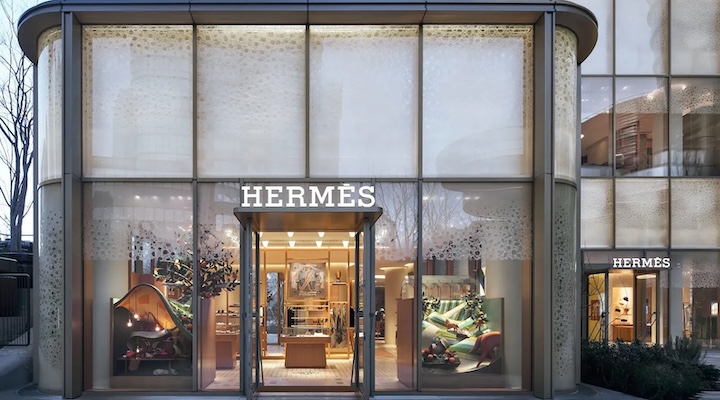Starting May 1, American shoppers browsing Hermes’ opulent boutiques for a $12,000 Birkin or a $3000 silk coat will find themselves paying even more. Hermes announced it will raise prices in the US in response to the imposition of tariffs. Eric du Halgouet, CFO of Hermes, said during the group’s earnings call that the price rise is expected to “fully offset” the effects of a 10 per cent universal tariff imposed by President Donald Trump’s administration earlier this month.
onth. The increase will be specific to the US. No changes are expected in Europe, Asia, or the Middle East.
Luxury-level “retaliation”
The US tariffs on EU-based goods will widen to 20 per cent by July if the two parties’ ongoing negotiations stall. But even at 10 per cent, the pain is real. For Hermes, which saw a 9 per cent year-on-year rise in US sales in Q1, America remains both a vital market and a vulnerable one.
The group’s revenue reached €4.1 billion in the first quarter of this year, with all geographical areas recording growth. Yet that figure fell slightly short of analysts’ expectations, particularly in light of last year’s momentum.
Sales in Asia were up just 1 per cent, as they continue to be affected by the downturn in traffic in Greater China that began in the second quarter last year. During the quarter, the group reopened its stores in Taiwan’s Taichung and Bangkok’s Central Embassy. Meanwhile, sales in Japan surged 17 per cent driven by the loyalty of local clients.Sales in the US and Europe jumped 11 per cent and 14 per cent, respectively. However, the CFO cautioned that the current positive growth trajectory in the EU might not last as the dollar has weakened.
Daniel Langer, CEO of luxury strategy firm Équité, emphasised that Hermes’ steady growth is no accident, but the result of “decades of strategic discipline” and an expert grasp of the psychological dynamics underpinning luxury consumption.
Holding the line on prestige
Among luxury players, Hermes is deemed to be the most disciplined in resisting market trends, discount culture and overexposure. However, maintaining momentum in the US will now depend on whether consumers can stomach a price bump on top of the brand’s global hike of 6 to 7 per cent earlier this year.
Yet Hermes’ long-term brand equity appears undented. Last week, the company briefly overtook LVMH to become the world’s most valuable luxury firm before slipping back into second place a few days later. Its market cap sat at $278.2 billion following a modest 1.3 per cent dip in share price last Thursday.
“Hermes and LVMH are both powerhouses, but their approaches couldn’t be more different,” said Anudeep Varma, a retail marketer and strategist.. “LVMH thrives on rapid growth, celebrity endorsements, and trend-driven campaigns. It’s everywhere. Hermes, however, takes a quieter, more disciplined approach. It focuses on timeless design, impeccable craftsmanship, and exclusivity, which is now paying off.
“In contrast, LVMH has been expanding aggressively, sometimes at the cost of brand clarity. With constant creative leadership changes, its brands risk losing that deep, emotional connection with consumers.”
That contrast is playing out in the numbers. Last week, LVMH reported a 5 per cent decline in sales for its fashion and leather goods division, which contributed nearly 80 per cent of the group’s profits last year.
With Hermes taking the lead on pricing power in the US, industry watchers are now asking: Will other luxury players follow suit?
Industry experts suggest that LVMH is likely to tread carefully. While it boasts a broader portfolio, not every brand under its umbrella has Hermes’ pricing elasticity. Meanwhile, Kering, still reeling from leadership and branding challenges at Gucci, may lack the leverage to raise prices without further weakening consumer demand.
Looking ahead, Hermes remains cautiously optimistic. The company reaffirmed its aim to sustain revenue growth at constant exchange rates, even as global economic, geopolitical and monetary conditions remain unpredictable.
Further reading: How LVMH’s weak quarter signals a changing luxury landscape.

